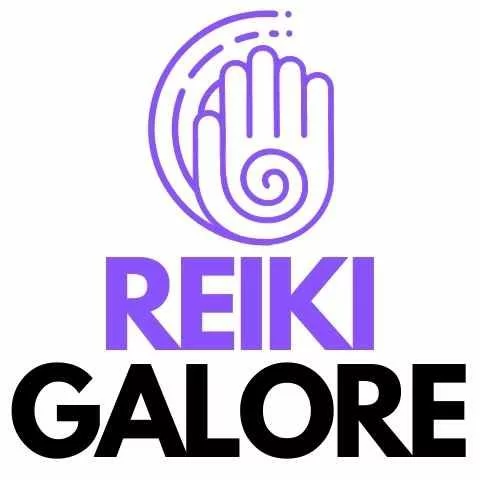So you’ve decided to dive into the world of Reiki and are wondering about the size of the table you should invest in. Well, fret not my friend, because in this article, we’ll be exploring the elusive question of whether there is indeed a preferred size for a Reiki table. Whether you’re a practitioner looking to upgrade or a curious individual considering trying out Reiki, read on to discover the ins and outs of finding the perfect table for your energetic healing sessions.
Height
Standard height for a Reiki table
When it comes to the height of a Reiki table, there is a standard measurement that most practitioners adhere to. The standard height for a Reiki table is typically around 24 to 26 inches. This height allows for easy access and maneuverability for both the practitioner and the client. It ensures that the practitioner can comfortably reach all areas of the client’s body without straining their back or putting unnecessary pressure on their joints.
Adjustable height options
While the standard height for a Reiki table works well for most practitioners, it is important to consider that everyone is different. Some practitioners may prefer a slightly higher or lower table depending on their height and personal comfort. That’s why many Reiki tables come with adjustable height options. These tables allow you to customize the height to suit your specific needs. This flexibility ensures that you can find the perfect height that allows for optimal comfort and ease of treatment.
Consideration for practitioner’s height
When choosing a Reiki table, it is crucial to consider the height of the practitioner. If you are taller or shorter than average, you may need to look for a table that can accommodate your height. Practicing Reiki requires a lot of physical movement and bending, so having a table that is the right height for you will help prevent strain or discomfort while working. It is always best to try out different tables and adjust the height to see what works best for you before making a final decision.
Width
Standard width for a Reiki table
The standard width for a Reiki table is typically around 28 inches. This width provides enough space for the client to lie comfortably during a session while still allowing the practitioner to access different parts of the body easily. It strikes a balance between client comfort and practicality for the practitioner.
Consideration for client comfort
It is important to consider the comfort of your clients when choosing the width of a Reiki table. Some clients may have broader shoulders or feel claustrophobic on a narrow table, so opting for a wider table may be more beneficial. However, it is essential to find a balance, as an excessively wide table may make it more difficult for the practitioner to perform certain techniques or reach specific areas of the client’s body. Ultimately, it is a matter of finding the right width that accommodates most clients while still allowing for easy movement and treatment.
Space limitations
Another factor to consider when choosing the width of a Reiki table is the available space in your practice area. If you have limited space, a narrower table may be more suitable to ensure proper circulation and ease of movement around the table. Conversely, if you have a larger treatment room, you may have the luxury of opting for a wider table without worrying about space restrictions.
Length
Standard length for a Reiki table
The standard length for a Reiki table is typically around 72 inches. This length provides ample space for most clients to lie comfortably without feeling cramped. It allows the practitioner to access all areas of the body during a session, ensuring a comprehensive treatment.
Consideration for different body sizes
It is important to consider the variety of body sizes that you may encounter as a Reiki practitioner. Some clients may be taller or have longer limbs, which may require a longer table to ensure their full body can fit comfortably. On the other hand, shorter clients may feel overwhelmed by a longer table and prefer a slighter shorter length. Being aware of your client demographic and accommodating their needs by choosing a suitable length will contribute to a positive and comfortable experience for both the client and practitioner.
Space limitations
Similar to considering the width of a Reiki table, the available space in your practice area should be given thought when choosing the length. If you have a smaller treatment room, a shorter table may be more practical to prevent the space from feeling cramped. However, if you have a larger area, you may have more flexibility in terms of table length.
Weight capacity
Understanding weight capacity
Weight capacity refers to the maximum amount of weight that a Reiki table can safely support. It is important to consider weight capacity to ensure the safety and stability of the table during treatments. Most standard Reiki tables have a weight capacity of at least 450 pounds, which is suitable for the majority of clients. However, if you anticipate treating clients who are on the heavier side, it may be wise to invest in a table with a higher weight capacity.
Consideration for different client sizes
As a Reiki practitioner, you will encounter clients of various sizes, and it is essential to make sure your table can accommodate them comfortably and safely. Larger clients may require a sturdier and more robust table to provide the necessary support and stability. Conversely, smaller clients may feel overwhelmed on a heavier table, so having a table that strikes a balance between durability and comfort is crucial.
Strength and stability of the table
When choosing a Reiki table, it is important to prioritize strength and stability. A sturdy table will not only provide a secure surface for your clients but also give you peace of mind during treatments. Look for tables made from high-quality materials and those with reinforced frames to ensure longevity and reliability. Investing in a table with a strong weight capacity will help you create a comfortable and safe environment for your clients.
Portability
Portable Reiki tables
If you anticipate traveling with your Reiki table frequently or offering your services in different locations, a portable Reiki table is a practical choice. Portable tables are designed to be lightweight and easy to fold, making them convenient for transportation. They often come with carrying cases or bags for added portability. These tables offer flexibility and allow you to expand your practice beyond a dedicated treatment room.
Consideration for transportation and storage
When you opt for a portable Reiki table, it is important to consider the transportation and storage aspects. Ensure that the table is lightweight enough for you to handle comfortably and that it can fit easily into your vehicle or mode of transportation. Additionally, check if the table comes with a carrying case or bag that provides protection during transport. As for storage, consider the available space in your home or practice area and choose a table that can be folded and stored without taking up excessive room.
Durability of portable tables
While portability is a significant advantage, it should not come at the expense of durability. Look for portable tables made from high-quality materials and robust construction. The table should be able to withstand frequent use and transportation without compromising its stability or integrity. Reading customer reviews and seeking recommendations from fellow practitioners can help you find a reliable and durable portable Reiki table.
Table material
Wooden Reiki tables
Wooden Reiki tables are a popular choice among practitioners due to their aesthetic appeal and natural feel. They often have a timeless and elegant appearance that adds warmth to any treatment room. Wooden tables also tend to be sturdy and durable, providing a reliable surface for treatments. However, it is important to consider the weight of wooden tables, especially if you plan on frequently transporting them.
Metal Reiki tables
Metal Reiki tables offer a sleek and modern look that appeals to many practitioners. They are often lighter in weight compared to wooden tables, making them more suitable for portable options. Metal tables are typically durable and can handle heavy loads, providing a solid and stable surface for treatments. However, some practitioners may find that metal tables lack the warmth and natural touch that wooden tables offer.
Consideration for aesthetics and durability
When choosing the material for your Reiki table, it is important to strike a balance between aesthetics and durability. Consider the overall ambiance you want to create in your treatment room and whether a wooden or metal table aligns with that vision. Additionally, evaluate the durability of the material, especially if you anticipate long-term use or frequent transportation. Both wooden and metal tables can be excellent options depending on your personal preferences and specific needs.
Padding
Thickness of padding
The thickness of the padding on a Reiki table plays a significant role in providing comfort and support to your clients. Most tables come with a standard padding thickness of around 2 to 3 inches. This thickness ensures a comfortable cushioning effect for clients, allowing them to relax and fully embrace the Reiki experience. However, some practitioners may prefer a thicker padding for added comfort, especially if they focus on techniques that require extended periods of time in specific positions.
Density of padding
In addition to thickness, the density of the padding is also crucial. A dense padding provides better support and can help distribute the client’s weight more evenly across the table. This prevents discomfort or pressure points during the treatment. It is important to find a balance between a soft and comfortable feel and adequate support to ensure your clients’ maximum comfort throughout the session.
Comfort and support for clients
The padding on a Reiki table ultimately contributes to the overall comfort and support for your clients. It is essential to choose a table with sufficient padding that will enable your clients to relax fully and enjoy the treatment. The combination of appropriate thickness and density will help create an optimal experience, allowing your clients to sink into the table without feeling any strain or discomfort. Taking into consideration different body types and personal preferences will contribute to providing a positive and soothing environment for your clients.
Face cradle
Availability of face cradle
A face cradle is a feature that allows clients to comfortably rest their face during treatments, especially during prone positions. Not all Reiki tables come with a built-in face cradle, so it is important to consider whether this is a feature you would like to have. A face cradle provides additional comfort for the client and allows for proper alignment of the neck and spine, enhancing the overall relaxation and therapeutic benefits of the session.
Adjustable height and angle
When selecting a Reiki table with a face cradle, look for one that offers adjustable height and angle options. This allows you to customize the position of the face cradle to meet the specific needs of each client. Adjustable features ensure proper alignment and comfort for clients with varying body types and personal preferences. The ability to fine-tune the face cradle enhances the overall quality of the treatment and helps create a serene and soothing experience.
Comfort for clients during prone positions
During a Reiki session, clients often need to lie in prone positions, which can strain the neck and cause discomfort if not properly supported. A face cradle provides a supportive and comfortable position for the client’s face and neck, alleviating any tension or discomfort. This allows your clients to fully relax and receive the healing energy without any physical distractions. Having a face cradle on your Reiki table ensures the well-being and comfort of your clients throughout the session.
Accessories
Bolsters and pillows
Bolsters and pillows are accessories that can significantly enhance the comfort and versatility of your Reiki table. Bolsters can be placed under the knees, ankles, or other body parts to provide additional support and alignment. Pillows, on the other hand, can be used to prop up the head, shoulders, or any other area that requires extra cushioning. These accessories aid in creating a cozy and comfortable experience for your clients, allowing them to relax fully and receive the full benefits of the treatment.
Armrests and side extensions
Armrests and side extensions are accessories that can add convenience and versatility to your Reiki table. Armrests provide a comfortable place for clients to rest their arms during the session, reducing tension and allowing for a more relaxed state. Side extensions, on the other hand, can widen the surface area of the table, accommodating clients with broader shoulders or those who prefer more space. These accessories contribute to the overall comfort and satisfaction of your clients, enhancing their experience.
Consideration for added comfort and versatility
When considering accessories for your Reiki table, think about how they can add comfort and versatility to each session. Assess the needs of your clients and the techniques you use, and determine which accessories would be most beneficial in creating a nurturing and supportive environment. The addition of these accessories can enhance your practice and leave a lasting impression on your clients, fostering a sense of well-being and relaxation.
Budget considerations
Determining your budget
When shopping for a Reiki table, it is important to determine your budget beforehand. Reiki tables can vary significantly in price depending on factors such as size, materials, and additional features. By establishing your budget, you can narrow down your options and find a table that meets your needs without exceeding your financial limitations.
Value for money
While budget is an important consideration, it is also essential to prioritize value for money. A higher-priced table may offer more durability, comfort, and additional features, making it a worthwhile investment in the long run. Conversely, a cheaper table may have limitations in terms of quality and functionality. Balancing your budget with the value and longevity of the Reiki table will ensure you make a wise investment that will serve you well in your practice.
Long-term investment
When choosing a Reiki table, it is crucial to consider it as a long-term investment. A durable and high-quality table may come with a higher upfront cost but can save you money in the long run by eliminating the need for frequent replacements or repairs. It is worth investing in a table that meets all your requirements and has the potential to support your practice for years to come. By considering the long-term benefits, you can make a decision that aligns with your budget and provides value for your money.
In conclusion, the ideal size for a Reiki table depends on various factors such as the practitioner’s height, client comfort, space limitations, and the overall treatment experience. Considering the standard measurements and individual needs, both the practitioner and client can benefit from a well-chosen Reiki table. Whether it’s adjusting the height and width, accommodating different body sizes, or choosing the right accessories, finding the perfect Reiki table involves careful consideration and weighing the available options. From portability and table material to padding thickness and the availability of a face cradle, every aspect plays a role in creating a comfortable, versatile, and effective Reiki table that enhances the healing experience for both the practitioner and the client. Ultimately, by considering budget considerations and focusing on long-term investment, you can find the ideal Reiki table that meets your needs and supports your practice for years to come.




